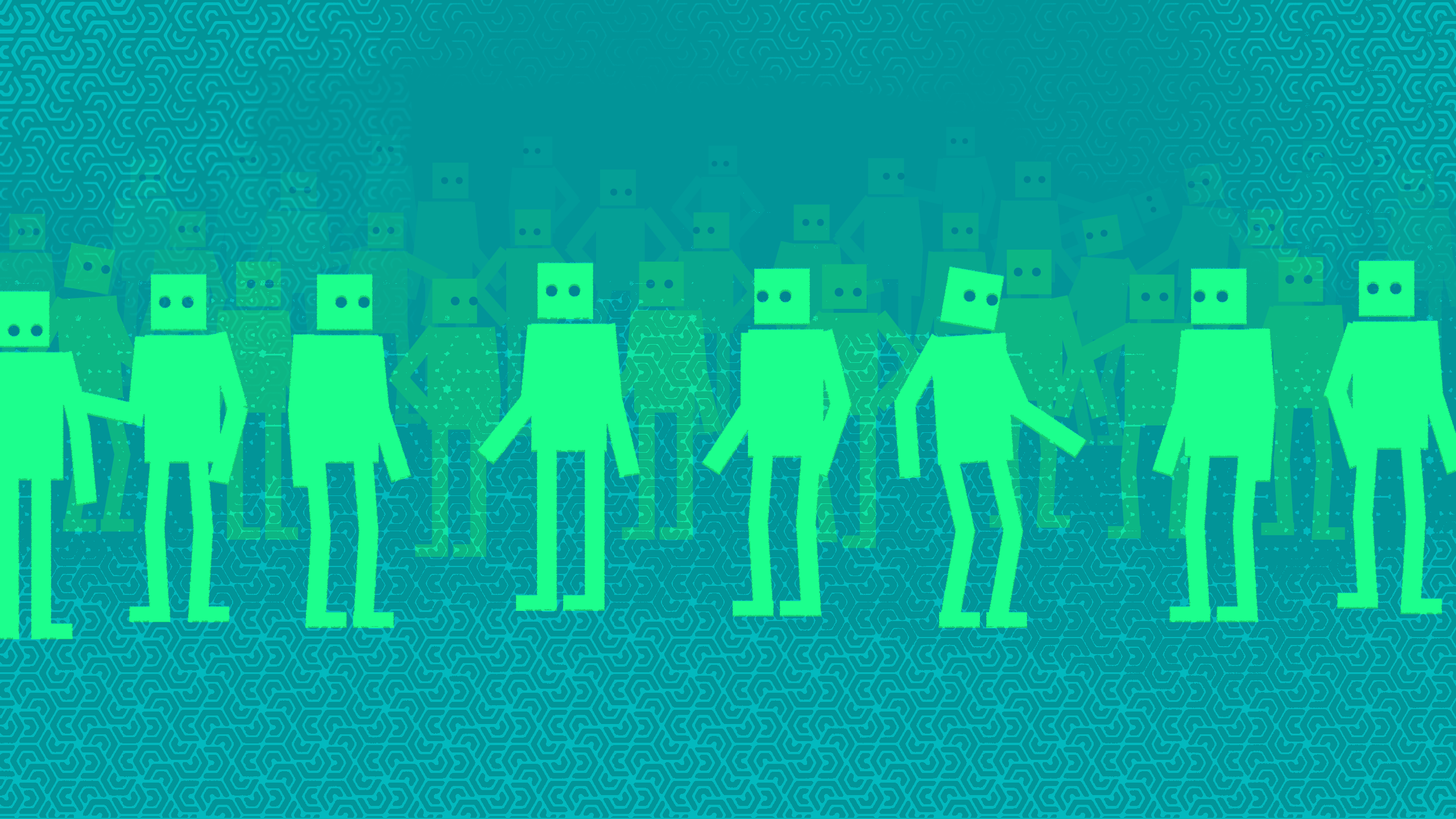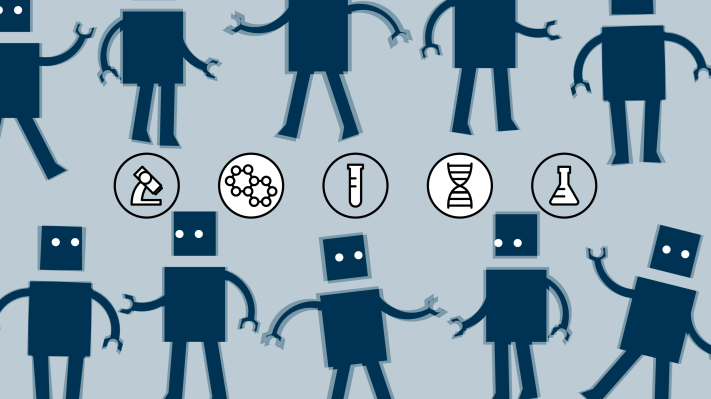Jobs were in the center spotlight in this year’s election. Donald Trump used it as a weapon against Hillary Clinton to mobilize the many millions of voters who felt as though technology, immigrants and free trade had left them behind. Clinton suggested spending hundreds of billions to upgrade our infrastructure and make state colleges and universities tuition-free.
However, Trump gave his audience something easier to chew on: a promise to bring back jobs from China and revive obsolete and otherwise dangerous jobs, such as mining. Both candidates chose to stay in the soundbite-friendly territories of minimum wage, taxes and trade agreements. Neither Trump or Clinton chose to emphasize technology and talk about completely revamping education.
The candidate with the courage to lay out a vision for the changing nature of “work” in America toward an improved quality of life would have won in a landslide victory, and there probably wouldn’t have been a discussion today around altering when and how we choose our leaders.
Our leaders should be solving for 1) creating higher-quality jobs and 2) increasing the purchasing power of all Americans. Robotics and AI will generate far more high-quality jobs than the onerous tasks it will render obsolete. To do so, regulation must be put in place to accelerate adoption, and people must be trained to design and benefit from these magical systems. Unfortunately, neither candidate appreciated the massive lever robots can provide to not only increase our productivity as a country, but also replace low-quality tasks with high-quality jobs.

Throughout history, technology has created more, higher-quality employment for workers. Coupled with education, technology is the ultimate lever that allows people to produce more while “working” less and achieving a better quality of life. Tractors liberated farm workers from dreadful exposure to more productive factory work aided by tools. Automation of the factory work put people behind desks to exercise their minds and build even more advanced tools; namely, computers and robots. AI and deep learning will ease the onerous work around engineering and give humans more time to exercise their creativity. Per capita GDP numbers are from the U.S. Census expressed as Geary-Khamis dollars. The elephants in the room are 1) stagnating purchasing power as increased wages are offset by a higher cost of living, and 2) increasing ratio between the wages of the top 5 percent to the mean earners. I expect better regulation and education to lead to faster technology adoption, hence the creation of new jobs and abundance for everyone.
Don’t blame the robots, blame cheap labor
The Department of Labor recently issued its latest jobs report. At first glance, the results are promising: The unemployment rate dropped slightly to 4.9 percent — lowest since the beginning of our six-year economic recovery, while wages grew at 2.8 percent, the best gain over that period. Unfortunately, wage growth has been offset completely by rising housing and healthcare costs. Furthermore, the types of jobs being created are in the service sector; which isn’t as productive as, and pays less than, manufacturing. More than 64,000 manufacturing and mining jobs were lost since last year. It is easy to point the finger at automation as the culprit. However, the real threat to manufacturing jobs isn’t automation; it’s cheap labor.
John Dulchinos is VP of Global Automation at Jabil Circuit, which employs 177,000 workers in 90 facilities over 23 countries worldwide, including the U.S. He did an interview with IEEE Spectrum in 2012, when he was CEO of robot maker Adept Technology, on whether robots are to blame for dwindling manufacturing jobs; and the answer was N-O. He cited that over the 15 years leading to the interview, 10-15,000 robots had been deployed in the U.S., totaling around 200,000 robots, which, at best could have replaced 500,000 jobs. In reality, the U.S. lost millions of manufacturing jobs over that same period; so robots aren’t the culprit, it’s the U.S. not being competitive with cheap labor overseas. As of 2012, China had grown to become the No. 4 user of industrial robots on the planet, which, at that rate of adoption, was expected to outpace America’s use of robots, while employing over 10 times more factory workers.

More, better robots = more, better jobs
I recently caught up with John to see how his predictions have fared. He observed that the last eight years have witnessed the highest rate of robot adoption worldwide, which is coincident with the fastest rate of employment in manufacturing, primarily in China, which now uses more robots than U.S. manufacturers do. In fact, the Chinese are adopting robots at a clip of 30,000 robots per year — more than double that of the U.S. In spite of this, and 12 million U.S. manufacturing jobs versus 125 million in China, China still ranks second to the U.S. in productivity. That’s because U.S. manufacturers put out tanks, turbines and aircraft while the Chinese put out toys and consumer electronics, which is a function of technology. China has 10x the workers and is installing robots at double the rate of the U.S., which implies a robo-penetration rate of less than a quarter in China versus the U.S. When one considers rising wages in China, we can conclude that automation is leading to better jobs and more productivity in China, which should put the U.S. on notice.
Rather than go head to head with cheap labor, John urged scientists to deliver next-generation robots that would give the U.S. an edge in new applications in healthcare, military and domestic applications. Industries that leverage advanced robots that assist a skilled workforce will remove cheap labor from the equation, and make the U.S. competitive. Those are the industries where the U.S. will dominate and reap the benefit of many high-quality, high-paying jobs. The invention of the tractor put half the U.S. workforce into factories, whose automation gave workers the time and the bandwidth to pursue engineering and the sciences, which created the virtuous cycle of more intellectually stimulating jobs at the expense of onerous tasks.

We need robo regulation and standardization
As I’ve written in the past, humans hold robots to very high standards, to the point where their adoption can be drastically delayed. Most of the interesting, next-generation robots will work in collaboration with humans. Regulators must define rules around limits of liabilities for the designers and operators of these robots. Insurance products will be soon to follow that protect designers, operators and the humans that interact with them in the outside chance of an accident. This concept is not new. Regulation that protected aircraft manufacturers and airlines accelerated the airline industry from non-existent to ubiquitous in a matter of years. Autonomous cars can be 100 percent safe; but in lieu of regulation, no operator can bear the risk of unknown liabilities; which is why Obama provided an outline for states to consider for regulation around autonomous vehicles. Unlike driverless cars, robots will be operating under different environments, perhaps in collaboration with other robots. Perhaps a lesson can be taken from the consumer electronics industry, which has done a masterful job creating standards and rules for interoperability, which also accelerates certification for specific use cases as defined by the standards.

Education should reflect the half-life of human jobs
My grandfather graduated from college with the skill sets he expected to use until the end of his career. My father went back to school after several years watching his profession mature as a civil engineer in the 1970s and chose to pursue aerospace engineering in the 1980s, which was impacted dramatically by Moore’s Law, materials and advanced manufacturing. My skill sets were obsolete as soon as I graduated, and I found myself learning how to fund deep-technology startups shortly after becoming aware of the rate at which the semiconductor industry is maturing.
If the useful half-life of our training continuously shrinking, then why has our educational system been the same for generations? Why do students graduate saddled with debt (which in many cases they cannot repay with the skills they are trained for), while the need for retraining to stay competitive isn’t a possibility, but rather a certainty? Perhaps a page should be taken from a physicians’ playbook, who must constantly be retrained to be up to speed on the latest medical practices to provide the very best care to their patients.
Educational services and the institutions that provide them need to be built for lifelong learning versus today’s one-stop-shop that satisfied the career needs of our grandfathers. Robots will continuously make jobs better for humans — humans who will benefit from continuous learning to be best positioned to perform the new tasks created by the automation of the old ones.
The industrial revolution moved jobs from the fields into the factories. Computers and machines took jobs away from factories and behind desks in engineering and the sciences. AI is going to automate what’s left of lots of manual and skilled work, and our current workforce needs to be constantly refreshed and prepared for the changing workplace.
As technology destroys jobs, creative entrepreneurs find ways to leverage the new technology to create new, better jobs. Most workers will succeed in retraining themselves, while many others are left behind. I would encourage our new leadership to instill a culture of continuous education among our workforce, while providing them with powerful tools to stay at the forefront of the new tools technology can offer. This requires a massive shift in our educational system, from today’s expensive, inefficient, factory-like four-year institutions to lifelong partners who are incentivized to keep their students (or should we say, clients) trained and qualified for continuously evolving jobs.
A continuously trained workforce, coupled with a culture of entrepreneurship to invent and disseminate new technology, will cultivate a future where nobody is left behind and everyone feels confident and empowered toward a brighter future.
